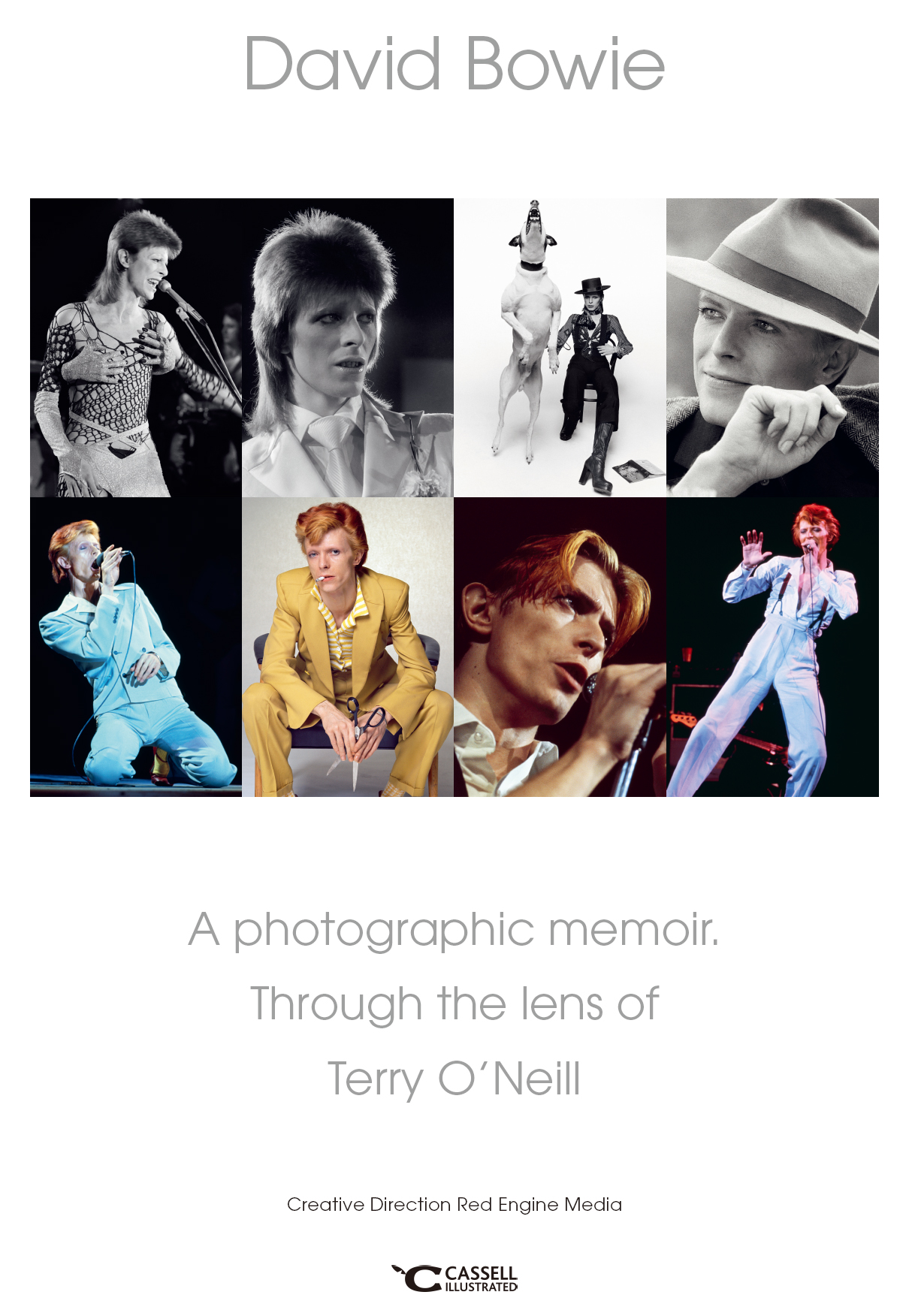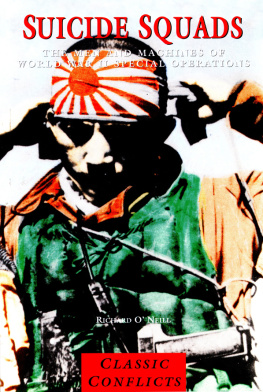ONeill - Bowie by Oneill : The Definitive Collection With Unseen Images
Here you can read online ONeill - Bowie by Oneill : The Definitive Collection With Unseen Images full text of the book (entire story) in english for free. Download pdf and epub, get meaning, cover and reviews about this ebook. year: 2019, publisher: Hachette Book Group USA, genre: Non-fiction. Description of the work, (preface) as well as reviews are available. Best literature library LitArk.com created for fans of good reading and offers a wide selection of genres:
Romance novel
Science fiction
Adventure
Detective
Science
History
Home and family
Prose
Art
Politics
Computer
Non-fiction
Religion
Business
Children
Humor
Choose a favorite category and find really read worthwhile books. Enjoy immersion in the world of imagination, feel the emotions of the characters or learn something new for yourself, make an fascinating discovery.
- Book:Bowie by Oneill : The Definitive Collection With Unseen Images
- Author:
- Publisher:Hachette Book Group USA
- Genre:
- Year:2019
- Rating:4 / 5
- Favourites:Add to favourites
- Your mark:
- 80
- 1
- 2
- 3
- 4
- 5
Bowie by Oneill : The Definitive Collection With Unseen Images: summary, description and annotation
We offer to read an annotation, description, summary or preface (depends on what the author of the book "Bowie by Oneill : The Definitive Collection With Unseen Images" wrote himself). If you haven't found the necessary information about the book — write in the comments, we will try to find it.
Bowie by Oneill : The Definitive Collection With Unseen Images — read online for free the complete book (whole text) full work
Below is the text of the book, divided by pages. System saving the place of the last page read, allows you to conveniently read the book "Bowie by Oneill : The Definitive Collection With Unseen Images" online for free, without having to search again every time where you left off. Put a bookmark, and you can go to the page where you finished reading at any time.
Font size:
Interval:
Bookmark:


David Bowie. 8 January 194710 January 2016


I was lucky enough to receive the call to photograph David Bowie. And I was smart enough to know to say yes.
If I had to name the most talented, enigmatic and audacious star I ever photographed, it would have to be David Bowie. He was a cerebral and searching soul who was always looking to push the boundaries of his art.
Even a simple portrait was not simple. David always chose his own direction. It was our choice if we wanted to follow or not its a testament to his talent that we did.

Introduction: |
Select one of the chapters from the and you will be taken straight to that chapter.
Look out for linked text (which is blue) throughout the ebook that you can select to help you navigate between related sections.
You can double tap images to increase their size. To return to the original view, just tap the cross in the top left-hand corner of the screen.

It started off the same as how these things would typically happen: I got a call from a manager asking me to come and shoot photos of their star. The star, in this case, happened to be one of the brightest that ever shone.
I was lucky enough to receive that call to photograph David Bowie. And I was smart enough to say yes. If I had to name the most talented, enigmatic and audacious star I ever photographed, it would have to be him. He was a cerebral and searching soul who was always looking to push the boundaries of his art. Even a simple portrait was not simple. David always chose his own direction; it was our choice if we wanted to follow or not. Its a testament to his talent that we did.
I wanted to be a jazz drummer. Although I studied to be a priest for about a year, it didnt work out. The rector pulled me aside one day. Terry, I dont think you will make a good priest, he confessed. You have too many questions.
I didnt question my love of music. Id play at as many jazz clubs as 1950s London had to offer, but I knew if I was going to have a real go at it, Id have to get to New York City. Someone told me about the new, glamorous world of working as a steward on transatlantic flights. That sounded great: work for a few days, New York layover, then back to London. But BOAC British Overseas Airways Corporation, a predecessor of todays British Airways didnt have any steward jobs going. I was offered work in their photographic unit, and Id be placed on the candidate list when a steward job opened up.
After a few weeks Peter Campion, who headed the unit, took an interest in me and was very encouraging about my budding photography work. The assignments at BOAC were to capture moments in the airport. Flying was a big, new industry and no longer just affordable to the mega rich, and the airlines used reunion photos and the like to attract travellers: hugging, crying, laughing how wonderful flying was, how it would bring people together. I was being trained, essentially, as a photojournalist and it was this idea that led Peter and me to discuss, at length, the work of photographers such as Henri Cartier-Bresson and W Eugene Smith. Peter would bring in these photography books and annuals to show me. This was my introduction to the decisive moment, as Cartier-Bresson would say. Peter would go on to tell me that Cartier-Bresson would work for months, travelling the world, in search of capturing a single image. I wasnt too certain about that for my own work: music was still very much in my blood.
Everything changed for me when, one day at the airport, I came across a very dapper gentleman, fast asleep amid a crowd of African dignitaries in full regalia. After I took a few photos a guy approached me and said, Mind if I take your film and show it to my editor? No problem. A few days later, I got a call. Turned out the gentleman I took a photo of was a famous British politician, the then home secretary Rab Butler, and the paper wanted to run my photos in the next issue. And I would be paid for it. I suddenly went from photographing at the airport to being offered a job covering events for one of the newspapers on Fleet Street. I was off and running.
The papers at that time all thought that the youth culture music, fashion, film and whatnot was going to be big in the 1960s, and they wanted a younger photographer to cover this new phenomenon. Plus, I was a musician, so they figured Id relate to the music. We want you to go down to Abbey Road and photograph this new band. That band was the Beatles. The pictures ran the next day and the paper sold out. I worked with the Beatles quite often in 1963 and 1964, following them to press conferences, award ceremonies, and television and stage rehearsals even photos of the Beatles with Laurence Olivier, or the Beatles with prime minister Harold Wilson would run in the papers. And the papers would rightly sell out. The men who owned the papers knew they had a new powerful selling tool on their hands, and I was quickly assigned to follow bands such as the Dave Clark Five, the Animals and the Searchers. Then I got a call from Andrew Loog Oldham. He was the young manager of a new band and asked if I would take some photos and do for them what I was doing for the Beatles. I was pretty busy and told Andrew that if they came into Soho, Id meet them. Days later, this group of five lads showed up and I took them to Tin Pan Alley [Londons Denmark Street]. The band was the Rolling Stones, who went on to become one of the greatest bands of all time. I loved every second that I was working with them, and the other new celebrities just entering the scene.
But after four long years at the paper, I was growing very tired of the other assignments Id be called for. The papers were the papers, after all, and I was one of their photographers, so when I was assigned to cover an event it was my job to do so. The assignment that finally ended my career as a newspaper photographer was a horrific plane crash that claimed the lives of dozens of people, young people, from Croydon, London. I was sent to cover some of the funerals and the aftermath of this tragic event and how it affected this small community. It felt so intrusive, trying to capture the personal and private emotions of the events, that I decided right then and there I had had enough of newspaper reporting. I told my editor the next day and he implied that, without that paper, my career was finished.
The next day, scared to death I had just made a horrible mistake, I called everyone I knew and hustled for work. And once the word got out that I was now freelance, I started to get calls from other big publications. Then movie studios started to ring, looking for special photographers to go on set for a few days to grab some stills for the media. It was a terrific opportunity for me and I found myself working with icons such as Audrey Hepburn, Michael Caine, Terence Stamp, Elizabeth Taylor, Ava Gardner, Brigitte Bardot, Raquel Welch and Peter Sellers. I worked on several of the early James Bond movies, having a great time off set with first Sean Connery and then Roger Moore. These encounters led to close friendships some I hold close to me to this day. The 1960s brought me the opportunity to work with musicians such as Tom Jones, who in turn introduced me to Elvis Presley, and models such as Twiggy and Jean the Shrimp Shrimpton. Then I was asked to meet with Frank Sinatra, the icon of icons. Nervously I went along, and that job would lead me to a collaboration of nearly thirty years with the great man. I was in the middle of what cultural historians would label the Swinging Sixties and it really was.
Font size:
Interval:
Bookmark:
Similar books «Bowie by Oneill : The Definitive Collection With Unseen Images»
Look at similar books to Bowie by Oneill : The Definitive Collection With Unseen Images. We have selected literature similar in name and meaning in the hope of providing readers with more options to find new, interesting, not yet read works.
Discussion, reviews of the book Bowie by Oneill : The Definitive Collection With Unseen Images and just readers' own opinions. Leave your comments, write what you think about the work, its meaning or the main characters. Specify what exactly you liked and what you didn't like, and why you think so.










